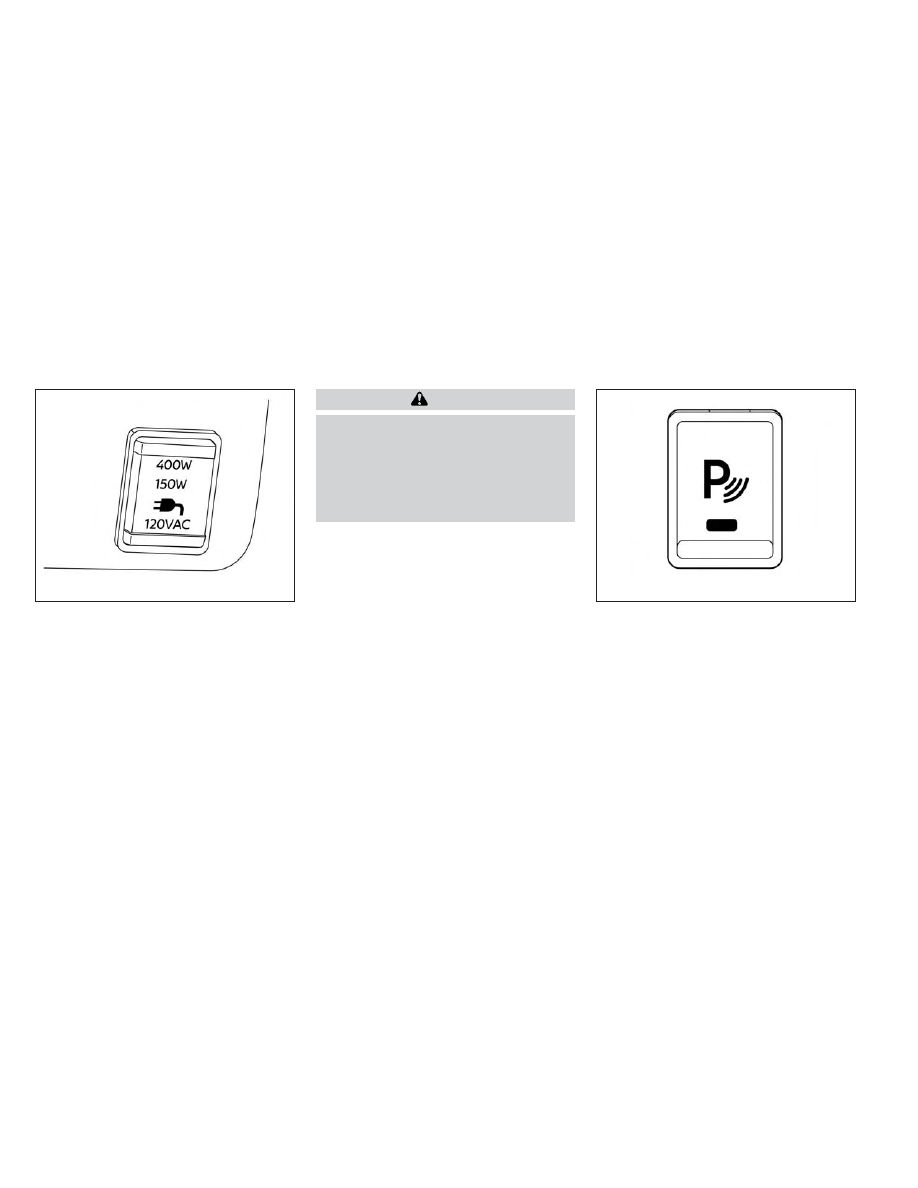Nissan Frontier (2023 year). Manual in english - page 11

To use the outlets for devices that require
up to 120v power, the vehicle must be run-
ning and the power inverter switch must
be on.
When the vehicle is in the P (Park) position,
the 400W and the 150W will automatically
illuminate. When the vehicle is out of the P
(Park) position, only 150W will illuminate.
For additional information, see “120v out-
lets” (P. 2-61) regarding using devices that
require the power inverter switch to be
activated.
CAUTION
•
Use power outlets with the engine
running to avoid discharging the ve-
hicle battery.
•
Do not use double adapters or more
than one electrical accessory, doing
so could significantly drain the bat-
tery of your vehicle.
The Parking Aids system switch on the in-
strument panel allows the driver to turn
the following systems (if so equipped) on
and off. To turn the systems on and off, the
ignition switch must be in the ON position.
• Rear Sonar System (RSS) (if so equipped)
• Moving Object Detection (MOD) (if so
equipped)
• Rear Automatic Braking (RAB) (if so
equipped)
• Rear Cross Traffic Alert (RCTA) (if so
equipped)
LIC4847
LIC3596
POWER INVERTER SWITCH (if so
equipped)
PARKING AIDS SYSTEM SWITCH (if so
equipped)
2-56
Instruments and controls